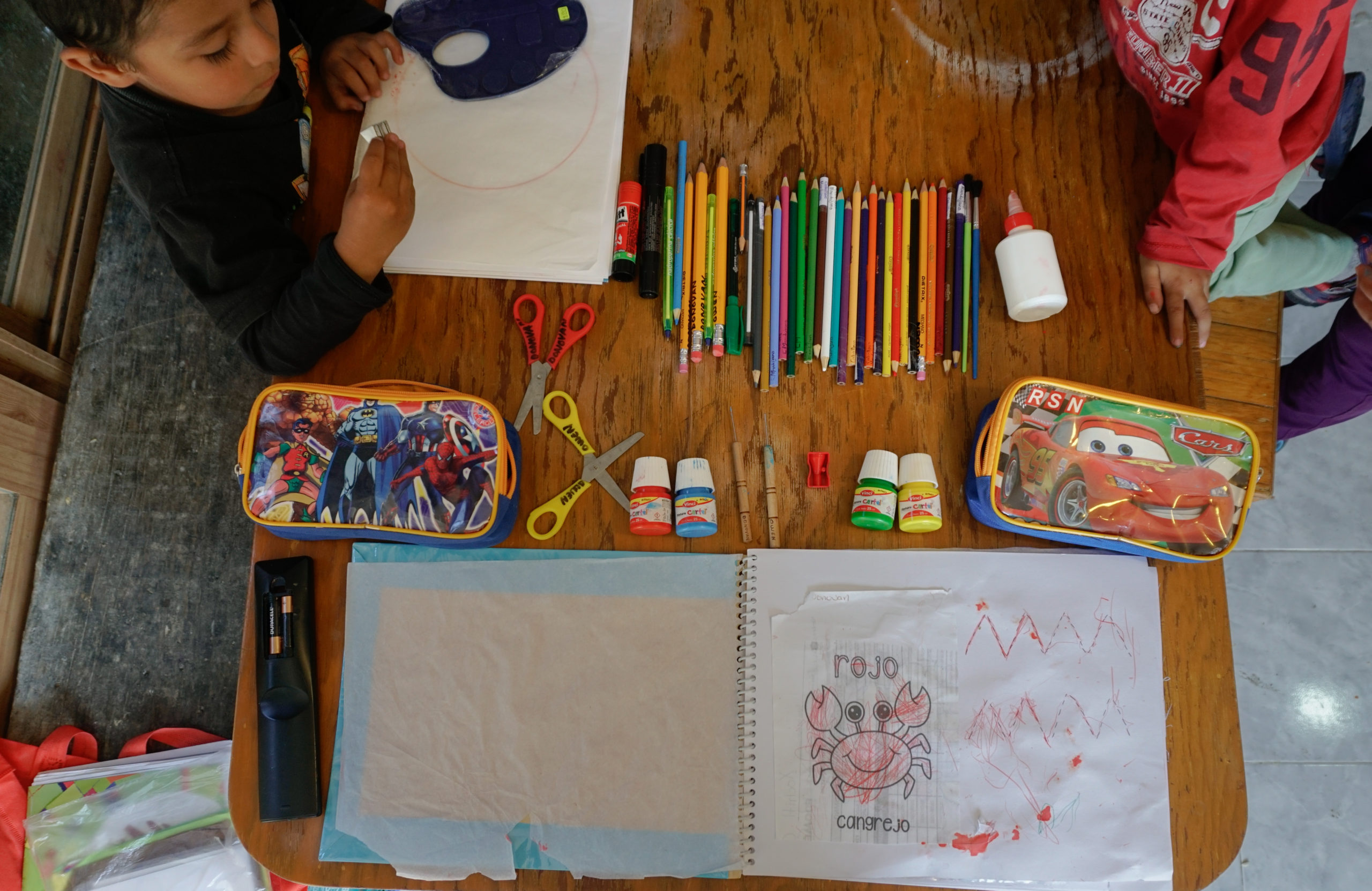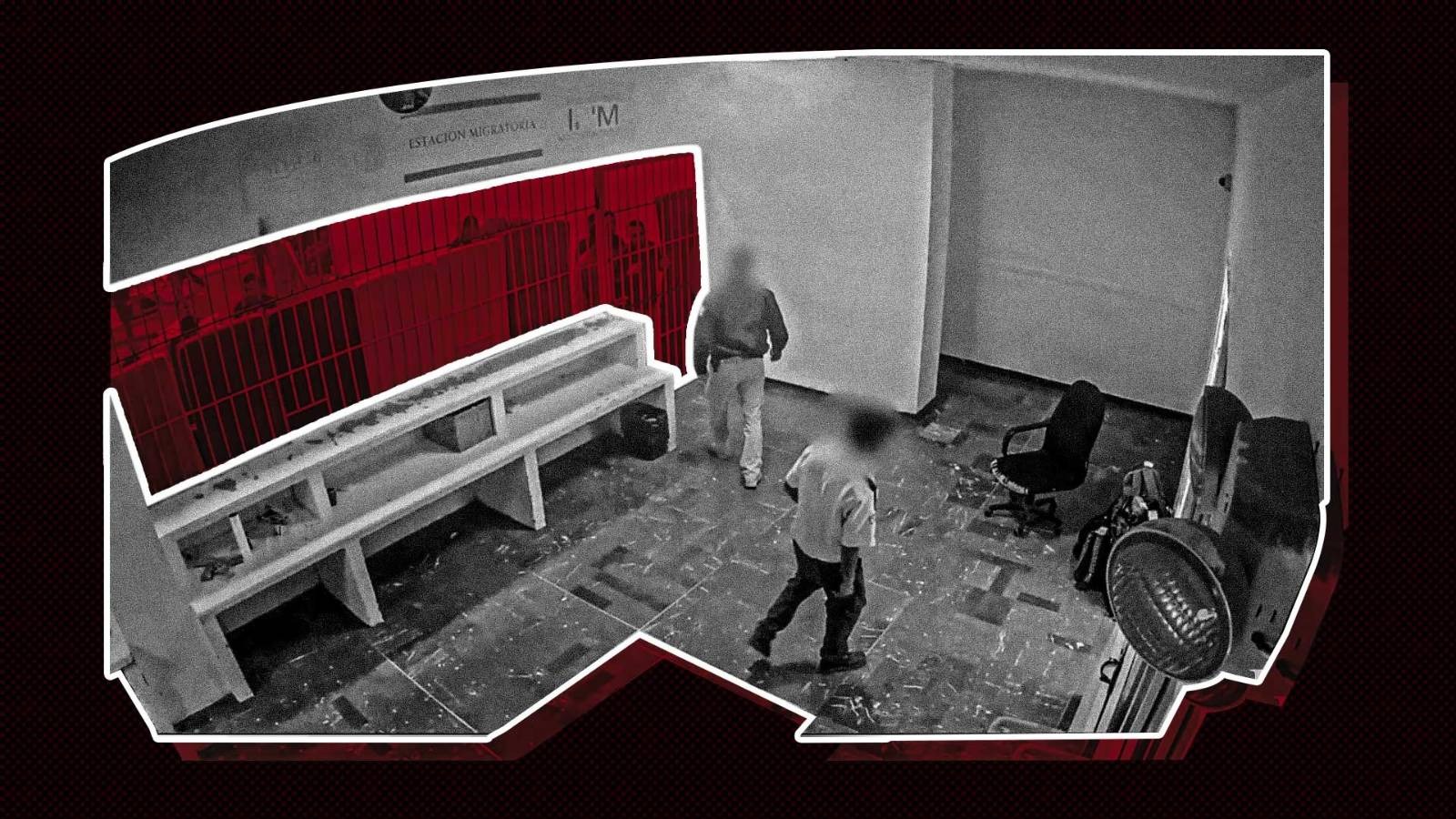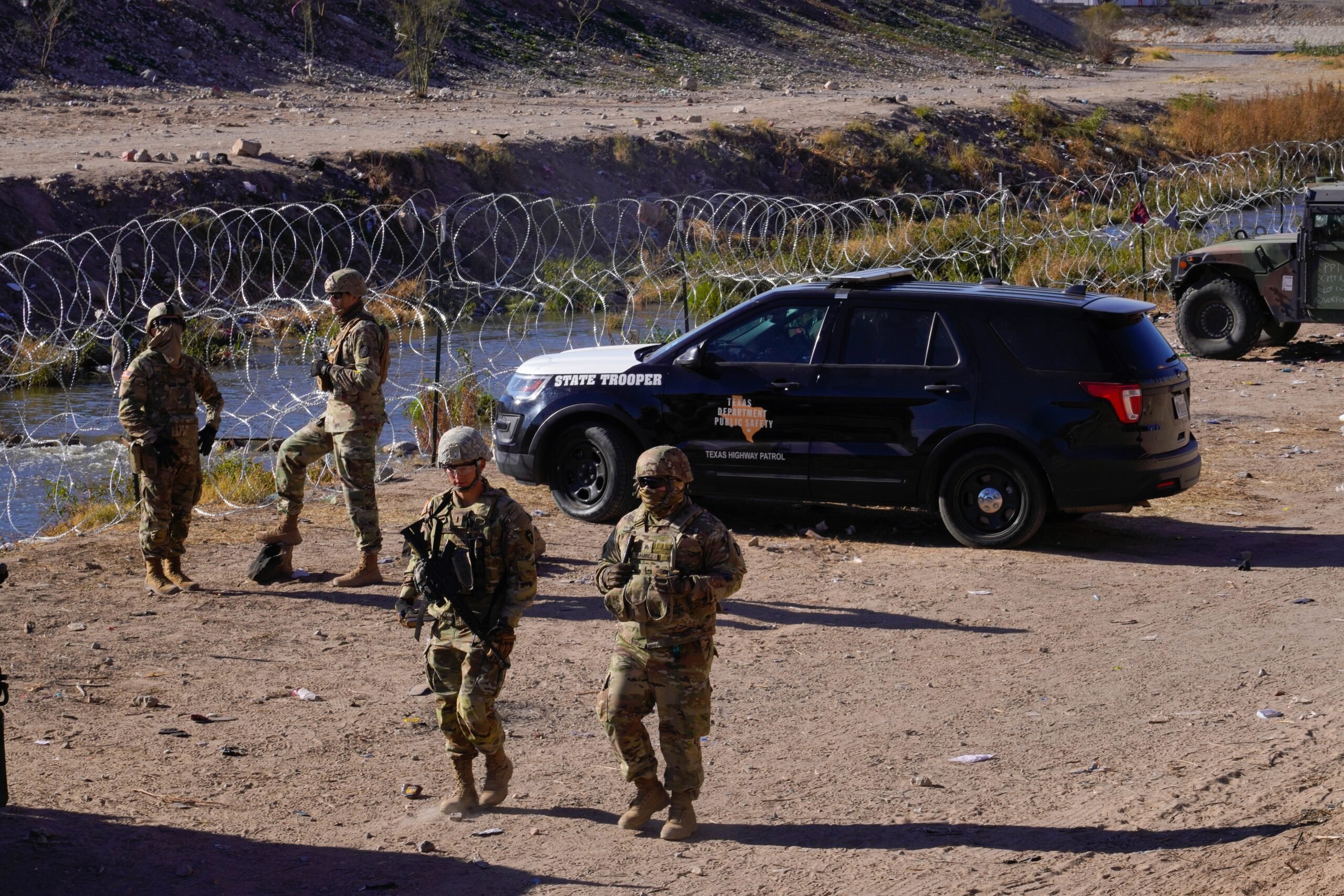
The Rising Cost Of Mexico’s ‘Free’ Education
Parents are increasingly responsible for enrollment fees, school maintenance, classroom supplies, uniforms and incidental expenses.
This story was originally published by Global Press Journal. Global Press Journal is an award-winning international news publication with more than 40 independent news bureaus across Africa, Asia, and Latin America.
by Mar García, Adriana Alcázar González, Ena Aguilar Peláez, Patricia Zavala Gutiérrez, Aline Suárez del Real Islas, Avigaí Silva, Maya Piedra Galindo, Lilette Del Refugio Aguirre Contreras, Marissa Revilla, Global Press Journal Mexico
With schools fully reopen across Mexico for the first time since before the pandemic, parents are adjusting to the costs of equipping their children for the classroom again—a price tag that many families are struggling to afford.
In a country where preschool, elementary, middle, and high school is mandatory and free, parents of public school students say they still spend hundreds of Mexican pesos on school supplies, uniforms and, in some cases, enrollment fees and hygiene products, including soap and toilet paper.
Each year, the Ministry of Public Education (SEP, for its initials in Spanish) publishes a list of suggested school supplies for each grade, which, according to the SEP, are the basic resources students need to begin their studies. At a school and office supply store in Mexico City, which sits within a kilometer (0.6 mile) of nine schools, the cheapest cost of all the suggested supplies listed for fourth grade is 291.50 pesos ($15), but if buying the most expensive brands, the cost increases to 738 pesos ($38).
School uniforms aren’t mandatory, but the Ministry of Public Education recommends their use as a “security measure.” This recommendation comes at a high price, according to the families interviewed, who say their children are required to wear uniforms. Though it depends on the school, typical uniform requirements include a formal skirt or pants, which students are expected to wear every Monday for their flag ceremony; a casual skirt or pants for the remaining days; shirts; shorts or workout pants; a sweater; dress shoes; and tennis shoes. Depending on the store, parents pay between 530.80 pesos ($27) and 995 pesos ($51) for uniforms, not including shoes.
With the average income at 6,534 pesos ($335) per month across most of the country, parents with more than one child are looking at public school expenses that exceed half of their monthly income.
All of the families interviewed say they are asked to pay an annual school enrollment fee, despite a law that forbids it. This fee can be in addition to maintenance and cleaning contributions. The cost of each item is set by the school, and failure to make payments can result in the withholding of crucial documents such as report cards and grade completion certificates, says a Mexico City mother who didn’t want to be named to protect her children. Rosa Espinoza, a mother of two, says some teachers even display the names of students who haven’t paid fees or bought requested items. The Ministry of Public Education declined to comment.
The costs parents are expected to fulfill don’t end once school starts. In many cases, families pay for additional items throughout the year, such as costumes and food for festivals, as well as project supplies.
The pandemic means antibacterial gel, face masks, and disinfectant wipes often appear on schools’ list of requirements. But the global health crisis hasn’t just incurred a need for personal protection in public places, it has also left many families financially worse off. This, coupled with the country’s worst period of inflation in 20 years and a higher unemployment rate than before the pandemic, means many parents are feeling the financial strain of sending their children to free public school.
Mexico City
In Mexico City, Rosa Espinoza started saving 100 pesos ($5.11) at a time, months before her 9-year-old son and 13-year-old daughter were due to return to school.
As a widow who lives with her mother-in-law and sells snacks on the street when she can, the cost of everything her children need for school is often out of reach. She says she was given 1,000 pesos ($51) for each of her children through a government scholarship available to all public school students in Mexico City. Espinoza used it to buy her children’s school uniforms.
With a daughter already through elementary school and now in middle school, Espinoza knows she must cover the costs her son’s elementary school requests, even if staff say they’re voluntary.
“At the elementary school, we were asked to pay 100 pesos [$5] for the school, for painting and things like that. It was supposedly voluntary, but you had to pay it,” Espinoza says.
On top of the recommended list of classroom supplies, Espinoza was also asked to donate a roll of toilet paper, cleaning supplies, antibacterial gel, soap, and disposable wipes. She is yet to be able to afford these items.
“I feel bad because I’d like to give them more, but I can’t. Sometimes I don’t even have enough money for their food.”
“The teacher hasn’t called me out, but she puts a sheet outside of the classroom with the names of those who haven’t paid or have missed bringing something,” says Espinoza, whose name hasn’t been added to the list after she explained her circumstances to the teacher.
Each child is required to have their own antibacterial gel, disposable wipes, face masks and a rag to clean their table. Then there are costumes for festivals. Most recently, the school asked all parents to bring a dish to feed 24 students as part of festivities.
Espinoza says nearly half of her earnings go to her children’s educational needs, but some months, she struggles to cover it all.
“Morally, I feel bad because I’d like to give them more, but I can’t,” she says. “Sometimes I don’t even have enough money for their food.”
By Mar García
San Cristóbal de Las Casas
Chiapas mother Beatriz Adriana López Hernández says the start of the school year in August was a tough blow to the family’s finances. She found that the cost of sending her two children to public school in San Cristóbal de Las Casas had tripled since the previous year.
López Hernández says her son’s high school requires a much more expensive uniform compared with his middle school, where her daughter, Sara Abigail Gutiérrez López, is a fifth grader.
“My husband and I spent around 1,500 pesos [$77] on uniform and shoes, and we had to pay it all at once; there was no extension,” López Hernández says. “There was no option to go to school without a uniform. They told us he had to wear his uniform from day one. If not, they wouldn’t let him enter the school.”
Their son, Daniel Alonso Gutiérrez López, had to take an entrance exam, which they paid 120 pesos ($6) for him to sit, on top of the enrollment fee of 300 pesos ($15.50).
“They told us he had to wear his uniform from day one. If not, they wouldn’t let him enter the school.”
“Thank God Daniel Alonso passed the exam,” López Hernández says. “If he hadn’t, I don’t know what we would have done. I suppose scramble to find a spot in another secondary school.”
A new school for their son also means two enrollment fees, in addition to uniforms, shoes, school supplies and masks, which set the family back nearly 3,500 pesos ($180) for both children. The costs have made López Hernández rethink the family’s financial situation; her husband earns between 1,200 pesos and 1,500 pesos ($61-$77) per week as a bricklayer.
“Sometimes we’re spread a little thin with the expenses,” López Hernández says. “I’m not working right now, but I think I’ll have to find a job. I’d like it to be compatible with my children’s schooling, though.”
By Adriana Alcázar González
Chilpancingo de los Bravo
In Guerrero’s capital, Chilpancingo de los Bravo, Indira Flores Salgado walks with her son to school every day. She says a good education is the best gift she can give him.
She is a single parent to her 9-year-old son, Ares Hasiel Flores Salgado, and receives no financial support to fund the costs she is expected to pay for her son to attend school.
Flores Salgado understands the annual enrollment fee of 250 pesos ($13) will rise to 300 pesos ($15.50) next year. Classroom supplies have set her back 500 pesos ($25) this year, but when school was closed during the pandemic, she was still charged the same amount. The school said the money would be used for cleaning materials when they reopened, she says.
These costs come on top of the recommended classroom supplies, a dictionary, and expenses of around 2,500 pesos ($128) for her son’s uniform.
Flores Salgado lives with her mother and sister surviving on occasional work as an assistant at an advertising agency and her mother’s pension.
“There are expenses I can’t afford,” she says. “My mother has to help me.”
By Avigaí Silva
San Francisco
Erika Yanet Vargas Hernández loves to cook, and she gets paid for it as a cook in a hospital. This year, she can work while her children are in school, a much-needed change from last year, when the pandemic meant both of her children were at home, her eldest studying online and her youngest not yet old enough to attend school.
Her eldest child, Eder Gael Vargas Hernández, spent his first year of school studying at home in San Francisco, in the state of Nayarit. For home study, he required a notebook and pencils, but when it came time for in-person learning, the single mother had a lot more expenses.
Hernández, who is also pursuing a degree in nutrition, says the cost of her son’s uniform was largely covered by a scholarship from Entreamigos, a local community center. She says the scholarship covered half of her 8-year-old son’s school supplies, and she paid for his sports uniform, notebooks, and pens.
She says the school requires an enrollment fee of 200 pesos ($10.20) as well as a weekly fee of 40 pesos ($2) for cleaning and maintenance.
“It is a bit difficult because I am a single mother,” Vargas says, “so I have to cut costs here and there.”
By Maya Piedra Galindo
Chihuahua
Liliana Gallegos was eager for her 9-year-old daughter to return to school after pandemic restrictions were lifted in Chihuahua, the capital of the state of Chihuahua.
The switch to home school meant Gallegos had to buy her daughter, María Isabela Altamirano Gallegos, a laptop for 3,600 pesos ($184) and pay 560 pesos ($28.50) monthly for internet access.
This year, the fourth grader returned to school after 18 months of being at home, and the expenses mounted. Gallegos paid an enrollment fee, and bought the recommended school supplies and a new school uniform, which all came to just under 3,000 pesos ($154). But despite María Isabela’s return to in-person classes, students at the school are still expected to complete assignments online, leaving the monthly internet bill an added expense.
“When you don’t have money for the monthly contributions, you have to help out at the school with a service.”
Gallegos says she spends around 700 pesos ($36) every month for classroom supplies and around 60 pesos ($3) a month on educational activities organized by the school. As a single mother, it’s been tough for her to cover it all, but she’s managed, she says.
“When you don’t have money for the monthly contributions, you have to help out at the school with a service, so to speak,” she says, which may include helping the teachers with student drop-off and pickup.
By Lilette Del Refugio Aguirre Contreras
Oaxaca de Juárez
Elizabeth Pérez has been a member of the parents’ committee at her daughter Camila Mitzuri’s school for five years and now serves as treasurer. Like other school committees in the state of Oaxaca, this team of parents works tirelessly to ensure students do not go without, but it comes at a price.
“We have meetings with the principal, and he gives us a list of necessities,” says Pérez, who also has a 14-year-old son who attends a different school close to their home, just outside the capital, Oaxaca de Juárez. “He (the principal) explains that all of those details can’t be solved by the school, as it’s not part of his job.”
Pérez says these “details” can extend beyond classroom supplies to include water, electricity, trash collection, phone lines, internet, cleaning supplies, and toilet paper.
To cover this, all parents are required to pay an enrollment fee of 250 pesos ($13), which parents are told covers the school’s service needs during the year, on top of 30 pesos ($1.54) a month for classroom needs, she says.
The government gives a bonus of 400 pesos ($21) each year for uniforms, but it’s not enough, Pérez says, because students need at least two uniforms: one for sports and one everyday uniform. “If I think about how much I spend each day, I think 50 percent of my daily expenses go to the school. I have a son in middle school, and he’s been asked to pay for his exam. If they don’t pay, they can’t take the exam.”
“If I think about how much I spend each day, I think 50 percent of my daily expenses go to the school.”
In a texted statement, Juana Aguilar Espinoza, deputy of the Congress of Oaxaca and president of the Education, Technology and Innovation Commission, says schools receive half their budgets from federal funds and half from the state.
“Students’ parents should not have to cover those costs on their own, nor any other unnecessary cost,” Aguilar Espinoza says, referring to the school’s service costs.
The federal government created a program called “School is Ours” in 2019 to support school infrastructure. The program provides funds directly to parent committees, and if the money is administered well, the school can obtain the funds the following year, Aguilar Espinoza says.
Pérez says her 10-year-old daughter’s school received funds from the program last year, which it used to buy a water cistern. The parents helped install it.
By Ena Aguilar Peláez
Chenalhó
As a single mother and domestic worker, it took Ana Santiz two weeks to earn enough money for her 8-year-old daughter’s uniform and shoes.
The 57-year-old from the community of Santa Martha, in Chenalhó, Chiapas, says she paid a “school fee” of 200 pesos ($10.20) at her daughter Rocío Santiz’s primary school.
“If we don’t pay the school fee, they take her out, I think,” Santiz says, referring to hearsay from other parents.
Santiz, who also has a teenager in high school, spent 1,200 pesos ($61) on Rocío’s uniform.
“Of what I earn at work, about half goes to pay for school things for Rocío,” says Santiz, who earns between 150 and 200 pesos ($7.69 and $10.20) per day.
Santiz used to supplement her income by making bracelets and necklaces to sell, but high blood pressure has affected her eyesight. Some of her costs are covered by a Benito Juárez grant of 1,300 pesos ($67) twice a year, given to families whose children may be at risk of dropping out due to a lack of economic resources.
“I have to pay because I want them to learn. … I want Rocío to complete her studies. You have to work hard.”
Despite being a single parent who is responsible for all her family’s expenses, Santiz says she won’t compromise her children’s education.
“I have to pay because I want them to learn,” Santiz says. “In my community, I didn’t go to school, and I like that my children do. I want Rocío to complete her studies. You have to work hard.”
Candelaria Hernández, principal at Telesecundaria 297, a high school in San Cristóbal de Las Casas, says federal and state funds don’t cover expenses such as cleaning costs, schools have no option but to ask parents to help.
“At my school, there has always been a payment of 250 pesos [$13] that goes toward paying the salaries of the janitorial staff because the Ministry of Education hasn’t employed enough of them, plus paying the school police officer, plus cleaning supplies, all that,” she says, adding that the annual fee her school and many others have to ask for is generally between 300 pesos and 500 pesos ($15.50 and $25.50) per household.
By Marissa Revilla
Tecámac
Niven Alina Mandujano Cervantes spends her afternoons making sure her two children are keeping up with their schoolwork in Tecámac, State of Mexico. This is their first year of preschool.
She says her twins, Donovan and Owen Caballero Mandujano, were excited to start school, but weeks after their first day, the 3-year-olds fell sick and had to be taken out. They were diagnosed with long COVID-19. Now she does all she can to make sure they don’t fall behind. Around her part-time job at a car parts store, she collects work from the school, which she helps her children complete. She is their teacher for now.
It’s an additional blow to the costs she had to pay for her children to attend school. The school called the enrollment fee of 300 pesos ($15.50) a “voluntary donation,” she says, but she paid it. Since she has older nephews at the school, she knows there is a “subtle coercion,” a daily reminder that if she doesn’t pay, her children’s names could appear on a list displayed on their classroom door.
Following the enrollment fee, she was asked to pay 325 pesos ($16.45) per child to cover the school’s annual cleaning costs, as well as 250 pesos ($13) per child for classroom supplies, which her children aren’t making full use of at home, she says.
Two school uniforms set her back 2,500 pesos ($128), a cost the mother couldn’t afford all at once. Her monthly income is 8,000 pesos ($412).
“I still don’t have them,” she says of her children’s school uniforms. “I paid half, and I’m about to pay the rest.”
By Aline Suárez del Real Islas
Puebla
In the city of Puebla, Azucena Rosas covers each of her 6-year-old daughter’s notebooks with colored paper, labels them with her name and grade and sews the bindings exactly the way her daughter’s school supply list instructs. The teacher requests that the notebooks be covered in one color, but Rosas decides to use different colors; she wants her daughter to be able to identify them, as she hasn’t learned to read yet.
It’s Korima Hernández Rosas’ first year of elementary school, but her parents are familiar with the demands of buying and covering notebooks for class. Korima is the youngest of four.
“Sew and sew, cover and cover,” Rosas says, adding that her children in middle school are expected to have an “infinite number of notebooks.”
Rosas runs a business selling snacks, appetizers and micheladas (a Mexican drink) on weekends. It has taken many hours to earn the money she needs for her children’s school supplies. She is no longer with Korima’s father, Javier Miguel Hernández López, who helps with some of the expenses.
On top of the cost of school supplies this year, they were asked to pay 610 pesos ($31) to cover a parent association fee, school insurance, and office expenses, she says.
Rosas says children “notice everything,” so she wants to make sure her children have all they need in class. Hernández says the expenses are nothing compared to what they’d have to pay if Korima attended private school.
Ana L., who teaches at a federal preschool in the city of Puebla and didn’t want her full name used for fear of repercussions, says parents pay for everything, as government funds only cover wages. Parents even contribute to the cost of mowing the lawn at the school where she teaches.
“Schools depend a great deal on financial support from parents because it’s their voluntary fees that maintain the school,” Ana says. “Their fees allow them to do waterproofing, repair the bathrooms, replace the locks on the classroom doors, broken windows, toner [for printers], internet, painting, water tanks, plumbing, etc. The parents help so, so much.”
Occasionally, Ana says, a government program provides additional funding, but for the past 10 years, her school has been asking for help to build a dome to shade the children during physical education classes—without success.
By Patricia Zavala Gutiérrez



